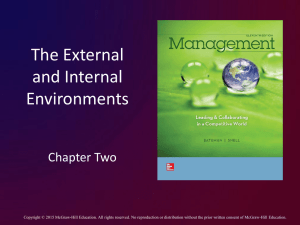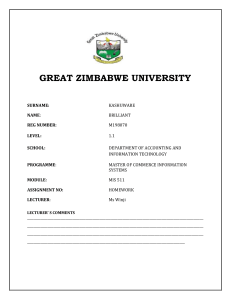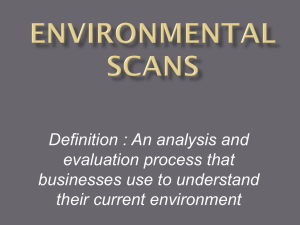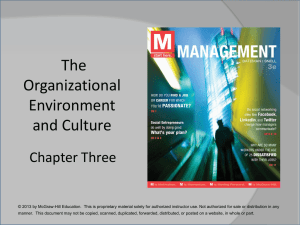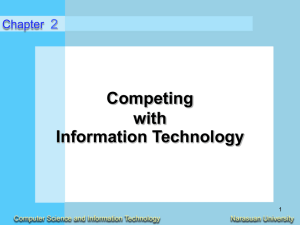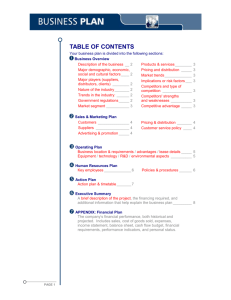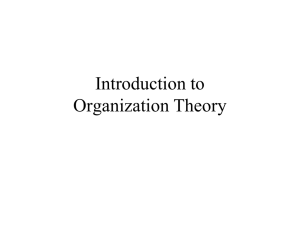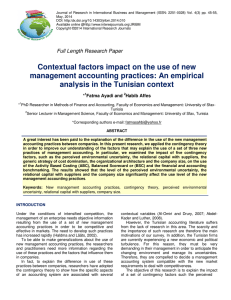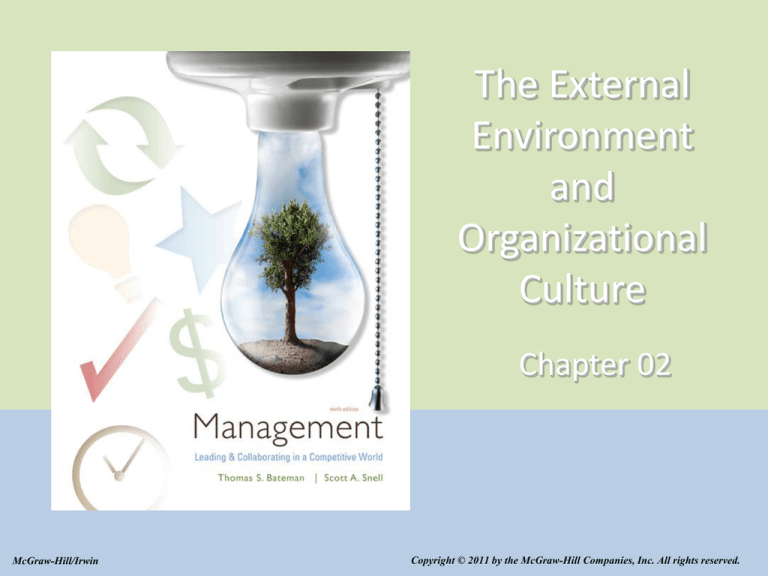
The External
Environment
and
Organizational
Culture
Chapter 02
McGraw-Hill/Irwin
Copyright © 2011 by the McGraw-Hill Companies, Inc. All rights reserved.
Learning Objectives
LO 1 Describe how environmental forces influence
organizations and how organizations can
influence their environments
LO 2 Distinguish between the macro environment and
the competitive environment
LO 3 Explain why managers and organizations should
attend to economic and social developments.
LO 4 Identify elements of the competitive
environment.
2-2
Learning Objectives
LO 5 Summarize how organizations respond to
environmental uncertainty
LO 6 Define elements of an organization’s culture
LO 7 Discuss how an organization’s culture affects
its response to its external environment
2-3
Organization Inputs and Outputs
Figure 2.1
2-4
Open Systems
Open systems
Organizations that are affected by, and that affect,
their environment.
2-5
Open Systems
Inputs
Goods and services organizations take in and use
to create products or services.
Outputs
The products and services organizations create.
2-6
Open Systems
External environment
All relevant forces outside a firm’s boundaries,
such as competitors, customers, the government,
and the economy.
Competitive environment
The immediate environment surrounding a firm;
includes suppliers, customers, rivals, and the like.
2-7
Open Systems
Macroenvironment
The general environment; includes governments,
economic conditions, and other fundamental
factors that generally affect all organizations.
2-8
The External Environment
Figure 2.1
2-9
Laws and Regulations
Regulators include agencies such as:
Occupational Safety and Health Administration
(OSHA)
Interstate Commerce Commission (ICC)
Federal Aviation Administration (FAA)
Equal Employment Opportunity Commission
(EEOC)
National Labor Relations Board (NLRB)
And many others
2-10
The Economy
The economic environment dramatically
affects managers’ ability to function
effectively and influences their strategic
choices.
Interest and inflation rates affect the
availability and cost of capital, growth
opportunities, prices, costs, and consumer
demand for products.
2-11
Twelve Month Comparison of
Stock Markets
Figure 2.3
2-12
The Economy
In publicly held companies, managers may
feel required to meet Wall Street’s earnings
expectations.
Managers may focus on short-term results at
the expense of long-term success
Some managers may be tempted to engage in
unethical or unlawful behavior that misleads
investors
2-13
Technology
Technological advances
create new products,
advanced production
techniques, and better
ways of managing and
communicating.
As technology evolves,
new industries,
markets, and
competitive niches
develop.
2-14
Demographics
Demographics
Measures of various characteristics of the people
who make up groups or other social units
2-15
Demographics
Demographic trends
Growth of the labor force
Increasing education and skill levels
Immigration
Increased numbers of women in the workforce
Increasingly diverse workforce
2-16
Social Issues and the Natural Environment
Societal trends regarding how people think
and behave have major implications for
management of the labor force, corporate
social actions, and strategic decisions about
products and markets.
Family leave, domestic partner benefits
2-17
The Competitive Environment
Figure 2.4
2-18
Competitors
Competition is most intense when:
There are many direct competitors
Industry growth is slow
Product/service is not easily differentiated
2-19
New Entrants
Barriers to entry
conditions that prevent new companies from
entering an industry
capital requirements, restrictive distribution
channels
2-20
Substitutes and Complements
Substitutes
alternative products or
services
video games watching
television
Complements
products or services that
increase purchases of
other products
car insurance
automobile purchases
2-21
Question
____________ costs are fixed costs buyer face if
they change suppliers.
A. Exchange
B. Lever
C. Switching
D. Transfer
2-22
Suppliers
Suppliers
provide resources or
inputs needed for
production
Switching costs
fixed costs buyer face
if they change
suppliers
2-23
Suppliers
Supply chain management
managing the network of facilities and people that
obtain materials from outside the organization,
transform them into products, and distribute
them to customers
2-24
Customers
Final customers
purchase products in
their finished form
Intermediate
customers
purchase raw material or
wholesale products
before selling them to
final customers
2-25
Environmental Analysis
Environmental uncertainty
Lack of information needed to understand or
predict the future.
2-26
Environmental Uncertainty
Environmental
complexity
The number of issues
to which a manager
must attend as well
as the
interconnectedness
of these issues
Environmental
dynamism
The degree of
discontinuous
change that occurs
within an industry
2-27
Environmental Analysis
Environmental
scanning
searching out
information that is
unavailable to most
people and sorting that
information to interpret
what is important and
what is not.
Competitive
intelligence
Information that helps
managers determine
how to compete better.
2-28
Environmental Analysis
Scenario development
A narrative that
describes a particular set
of future conditions
Best-case, worst-case
Forecasting
Method for predicting
how variables will
change the future
2-29
Question
What is the process of comparing an
organization’s practices and technologies with
those of other companies?
A. Comparative technology
B. Benchmarking
C. Process synchronization
D. Process asynchronization
2-30
Environmental Analysis
Benchmarking
The process of comparing an organization’s
practices and technologies with those of other
companies.
2-31
Adapting to the Environment
Buffering
Creating supplies of
excess resources in case
of unpredictable needs.
Smoothing
Leveling normal
fluctuations at the
boundaries of the
environment.
2-32
Influencing Your Environment
Independent strategies
Strategies that an
organization acting on its
own uses to change
some aspect of its
current environment.
Cooperative strategies
Strategies used by two
or more organizations
working together to
manage the external
environment.
2-33
Independent Action
Table 2.4
2-34
Cooperative Action
Table 2.5
2-35
Changing the Environment You are In
Strategic maneuvering
An organization’s conscious efforts to change the
boundaries of its task environment.
Domain selection
Entrance to a new market or industry with an
existing expertise
Diversification
Occurs when a firm invests in a different product,
business, or geographic area
2-36
Changing the Environment You are In
Mergers
One or more companies combine with another
Acquisitions
One firm buys another
Divestiture
A firm sells one or more businesses
Prospectors
Continuously change the boundaries or their task environment by
seeking new products and markets, diversifying and merging, or
acquiring new enterprises
Defenders
Stay within a stable product domain as a strategic maneuver
2-37
Culture and the Internal Environment of
the Organization
Organizational culture
The set of important assumptions about the
organization and its goals and practices that
members of the company share
In strong cultures, the majority of people within the
organization agree on organizational goals
In weak cultures, the majority of people within the
organization disagree on organizational goals
2-38
Competing Values Model of Culture
Figure 2.6
2-39
Destination CEO: The Nielsen Company
How might the
Internet figure into
the future of A.C.
Nielsen?
What are the pros
and cons of
becoming CEO of a
privately held
company versus a
publicly traded firm.
2-40

